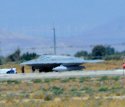Jura The idiot
General
When It Comes to the Navy, Size Matters
"During his recent confirmation hearing, just-confirmed Secretary of the Navy Richard V. Spencer specifically on the opportunity to reinforce the 350-ship goal ..."
as an armchair admiral, I noticed Jul 14, 2017
"During his recent confirmation hearing, just-confirmed Secretary of the Navy Richard V. Spencer specifically on the opportunity to reinforce the 350-ship goal ..."
as an armchair admiral, I noticed Jul 14, 2017
anyway what the author ignores is the White House got involved in the LCS PORK Jul 10, 2017Wednesday at 2:54 PM
and here's DefenseNews story A 355-ship Navy? We’ll see, says Trump’s Navy secretary pick
source:
which may create an illusion of "capacity" while those ships are unarmed (and their "capability" is hyped EDIT as in ludicrous fantasizing: Missile Sponges & Network Nodes )Jul 1, 2017
... details emerging:
"On May 23, the U.S. Navy rolled out its 2018 budget request that included one littoral combat ship, or LCS. The logic was that since Congress had given the Navy three in fiscal year 2017, an additional one would keep both builders — Wisconsin-based Marinette Marine and Alabama-based Austal USA — afloat.
But inside the White House, alarm bells went off in some sectors. Peter Navarro, the head of U.S. President Donald Trump’s trade and industrial policy office, was looking at information indicating one ship could trigger layoffs at both shipyards. Those concerns were shared by senior Trump aides Rick Dearborn and Stephen Miller — both old hands of long-time Alabama Sen. Jeff Sessions — and together they lobbied and prevailed upon Office of Management and Budget Director Mick Mulvaney to add a second ship to the request."
Life support: The Navy's struggle to define a LCS bare minimum
goes on below due to size limit
Last edited:


